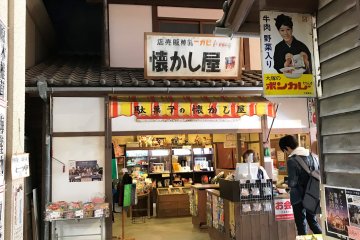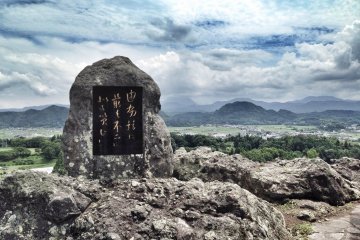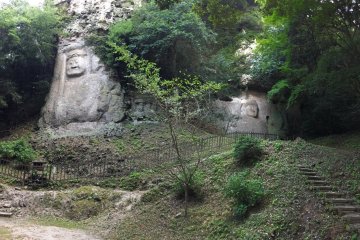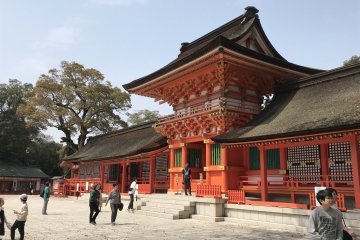There aren’t many cherry trees at Usa Shrine, though a row of them by the stream makes for a gentle stroll in Spring time, made more lovely by sharing some amazake, literally sweet sake from the tea house nearby.
They also say that romance has a pink glow, so why not try your luck at the love shrine, a contraption dispensing paper scrolls with a love match rate of 50 percent, plus or minus 50 percent. To increase your chances, you can always buy another scroll if you don’t like the first or the second scroll. On the other hand, there is no shadow of doubt if you try to steal a scroll, with the sign repeating the consequences in three languages if you don’t pay the perquisite ¥100 per scroll.
When it comes to good fortune, there is a sliding scale, from sho-kichi, or small fortune, all the way to dai-kichi, for big fortune. The kanji script for dai is “大”, or big. If you are not happy with a small fortune, you can, like my seven-year-old child prodigy at the putt-putt golf, try again and again until you get that “hole in one”. By possibly spending a small fortune, you might secure the dai-dai-dai-kichi. Literally big, big, big fortune, or in the words of the fortune machine, “unbelievably good fortune”.
To outsiders, it is hard to understand the lengths that many locals go to in following the paths of the sun and moon in divining lucky and unlucky days. Friend’s day, it is said, is good for weddings, but awful for funerals, lest you unwittingly take your friends with you prematurely to the underworld. .
Not just in Oita, but in shrines all over Japan, you can see small paper packages tied to a tree. These are o-mikiji, or fortune papers. There is even children’s mikiji, with a grand prize of having ten years of Christmas presents at once (okay, maybe I made that up). Popular folklore says that if you don’t like your fortune, you can just tie it to the tree, and let the winds blow that ill luck away. What really touched me, however, were people who tied good fortune to the tree, so that everyone can be blessed. Maybe we all need a helping hand.




















